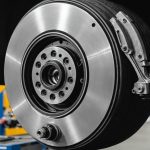Owning a British classic car is often a dream realised through years of aspiration. These timeless automobiles are more than just vehicles; they are a testament to an era gone by. However, integrating modern technology, such as an infotainment system, into your classic ride can significantly enhance the driving experience. While purists might argue against altering the original setup, a modern infotainment system can add immense value in terms of convenience and functionality. Here’s how you can retrofit a contemporary infotainment system into your beloved British classic car.
Understanding the Benefits of Modern Infotainment Systems
Retrofitting a modern infotainment system into a British classic car may initially seem daunting. However, the benefits far outweigh the challenges. Modern infotainment systems offer a host of features, including GPS navigation, Bluetooth connectivity, touchscreens, and smartphone integration, which can greatly enhance the comfort and convenience of your driving experience.
Have you seen this : What are the latest advancements in anti-theft systems for British vehicles?
An infotainment system can offer seamless connectivity for hands-free calls and streaming music, ensuring you stay connected on the go. Additionally, modern systems often come with advanced navigation features that can save you from the hassle of getting lost or struggling with outdated maps. The enhanced audio quality in these systems can also transform your in-car entertainment experience.
Moreover, some modern infotainment systems come with safety features such as reverse cameras and parking sensors. These features not only make driving safer but also add a layer of convenience, especially when maneuvering a classic car that may not have the best visibility. In essence, retrofitting a modern infotainment system can make your classic car more usable and enjoyable without compromising its vintage charm.
Topic to read : What are the best practices for maintaining the battery in a British plug-in hybrid?
Choosing the Right Infotainment System
Choosing the right infotainment system is crucial for a successful retrofit. The market offers a plethora of options, but not all of them will be suitable for your British classic car. It’s essential to consider both the functionality and the aesthetics of the system you plan to install.
When selecting an infotainment system, look for one that matches the aesthetic integrity of your classic car. Opting for a unit with a vintage look that complements the car’s interior can make the modern upgrade appear more cohesive. Some manufacturers offer retro-styled units that combine modern technology with a classic appearance, ensuring the new system doesn’t look out of place.
Consider the features that are most important to you. If you often travel long distances, a system with a reliable GPS function is essential. For those who prefer listening to music, focus on the audio quality and compatibility with modern streaming services. Additionally, ensure the system supports Bluetooth connectivity for hands-free calling and media streaming.
It’s also vital to check the compatibility of the infotainment system with your classic car. Measure the dashboard space to ensure the system will fit without requiring extensive modifications. Additionally, consider the electrical system of your car, as older vehicles may require an electrical upgrade to support modern gadgets.
Preparing for the Installation
Preparation is key to a smooth installation process. Start by gathering all the necessary tools and equipment before you begin. This might include screwdrivers, wire cutters, electrical tape, and other essential tools. You’ll also need the installation manual for your chosen infotainment system.
Next, disconnect the car battery to ensure safety during the installation process. This step is crucial to avoid any electrical mishaps. Once the battery is disconnected, remove the existing radio or audio system from the dashboard. This might involve unscrewing panels and disconnecting wires, so proceed with caution to avoid damaging any components.
Before installing the new infotainment system, it’s advisable to check the wiring. Older car wiring might not be compatible with modern systems, and you may need to install a wiring harness adapter. These adapters are designed to bridge the gap between old car wiring and new technology, ensuring a seamless connection.
Additionally, it’s important to prepare for any potential modifications that might be required. Some classic cars might need minor adjustments to the dashboard to accommodate the new system. Be prepared to trim or cut panels if necessary, but always proceed with caution to preserve the integrity of the car’s interior.
Step-by-Step Installation Guide
Now that you’re prepared, it’s time to install the infotainment system. Here’s a step-by-step guide to help you through the process:
-
Connect the Wiring Harness Adapter: Begin by connecting the wiring harness adapter to the car’s existing wiring. This adapter will ensure compatibility between the old wiring and the new system.
-
Mount the Infotainment System: Carefully insert the new infotainment system into the dashboard. Ensure it fits snugly and securely. Use the screws provided to mount the system in place.
-
Connect the Antenna Adapter: If the new system requires an antenna connection, attach the antenna adapter to link it to the car’s existing antenna.
-
Connect Power and Ground Wires: Connect the power and ground wires from the infotainment system to the car’s electrical system. Double-check the connections to ensure they are secure.
-
Attach Peripheral Devices: If your infotainment system includes additional features such as a reverse camera or parking sensors, connect these devices according to the manufacturer’s instructions.
-
Test the System: Before reassembling the dashboard, reconnect the car battery and test the new system. Ensure all features are working correctly, including the touchscreen, Bluetooth, GPS, and audio functions.
-
Reassemble the Dashboard: Once you’re satisfied that the system is functioning correctly, reassemble the dashboard. Replace any panels or screws that were removed during the disassembly process.
By following these steps, you can successfully retrofit a modern infotainment system into your British classic car, enhancing both its functionality and driving experience.
Maintaining the Integrity of Your Classic Car
While upgrading your classic car with a modern infotainment system can significantly enhance the driving experience, it’s essential to maintain the car’s original charm. Here are some tips to ensure you keep the classic essence intact:
-
Choose Period-Correct Components: Opt for infotainment systems that blend seamlessly with the car’s interior. Many manufacturers offer modern systems with a vintage look, ensuring the upgrade doesn’t look out of place.
-
Avoid Irreversible Modifications: Make sure any modifications are reversible. This means avoiding drastic changes to the dashboard or interior that cannot be undone. The goal is to enhance functionality without compromising the car’s original state.
-
Keep Original Parts: Store the original radio or audio components safely. This way, you can revert to the original setup if you ever decide to sell the car or participate in classic car shows.
-
Regular Maintenance: Regularly maintain both the classic car and the new infotainment system. Ensure all connections are secure and the system is functioning correctly. Regular maintenance will help preserve the longevity of both the car and the infotainment system.
-
Consult Professionals: If you’re unsure about any aspect of the retrofit process, consult a professional. An expert can provide valuable insights and ensure the installation is done correctly, preserving the integrity of your classic car.
By following these tips, you can enjoy the benefits of modern technology while preserving the timeless charm of your British classic car.
Retrofitting a modern infotainment system into a British classic car is a rewarding endeavor that can significantly enhance the driving experience. By carefully selecting the right system, preparing adequately, and following a structured installation process, you can successfully integrate modern technology without compromising the classic appeal of your vehicle. This balanced approach ensures that you enjoy the best of both worlds – the timeless charm of a British classic car combined with the convenience and functionality of modern infotainment systems. Whether for daily commutes or long weekend drives, this upgrade can transform your driving experience, making each journey more enjoyable and connected.











